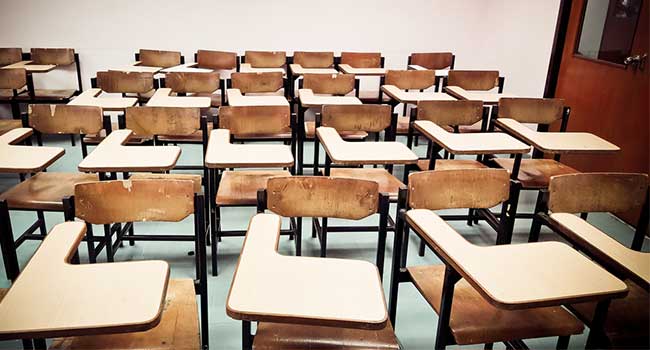
School Violence Through the Decades
School shootings are not new. Campuses have been fighting to keep students safe for decades.
- By Ralph C. Jensen
- September 14, 2018
Roughly one-third of today's parents fear for their child's safety in school, according to a poll by Phi Delta Kappa, an educators' association. That's the highest proportion since 1998 and a steep increase from 2013, when that number was only 12 percent.
Schools are taking action as they confront the reality that they easily could be the next target. From sophisticated surveillance technology to programs that train and arm staff, many school boards have developed safety measures that make schools feel increasingly like ballparks, airports and museums.
School shootings have existed for decades, but only today has more attention been placed on the devastation; the numbers of students involved and they type of semi-automatic weapon used create more carnage. Guns have not been the only means of subjecting students and teachers to the horror.
This is not a complete list of more than 300 incidents that have taken place. The last four years have been the most violent, and have taken more lives than any other decade in our history.
November 12, 1820
Charlottesville, VA
John Anthony Gardner Davis, a law professor at the University of Virginia, was shot by student Joseph Semmes, and died from his wound three days later.
November 2, 1853
Louisville, KY
Student Mathews Flounoy Ward took a pistol to school, where he shot the schoolmaster William H.G. Butler as revenge for what Ward thought was excessive punishment of his brother the day before. Butler died, and Ward was acquitted.
February 20, 1874
Agency, MT
After being ejected from school for disobedience, 20-year-old Thomas Squires, fatally shot Prof. Hayes in the abdomen three times without warning.
April 6, 1904
Chicago, IL
Two students had been fighting for most of a year over a girl. In their last fight, Henry Schaze threw 16-year-old Paul Jelick to the ground, drew a revolver, and killed his rival.
March 4, 1920
Cincinnati, OH
Fourteen-year-old student, Lawrence Angel, shot his teacher, Beatrice Conner, through the arm for sending him to the principals’ office.
May 19, 1936
Williamstown, MA
Lewis Jack Somes Jr., shot and killed classmate Robert Henneberry and wounded William Hartz Jr., before killing himself in Lehman Hall at Williams College.
August 1, 1966
Austin, TX
University of Texas tower shooting: 25-year-old engineering student, Charles Whitman, got onto the observation deck at the University of Texas-Austin, from where he killed 15 people and wounded 31 during a 96-minute shooting rampage. He had earlier murdered his wife and mother at their homes. It was the deadliest shooting on a U.S. college campus until the Virginia Tech shooting in 2007. He was then killed by police.
May 4, 1970
Kent, OH
Kent State University; During protests against the bombings in Cambodia during the Vietnam War, members of the Ohio National Guard shot and killed 4 unarmed college students and injured a further 9. The shootings led to protests and strikes on colleges all across the United States.
May 16, 1986
Cokeville, WY
Cokeville Elementary School hostage crisis: 43-year-old former town marshal David Young, and his 47-year-old wife, Doris Young, took 136 children and eighteen adults hostage at Cokeville Elementary School.
Sept. 10, 2018
Memphis, TN
A teen girl was injured after shots were fired into school bus full of students attending Fairley High School.
About the Author
Ralph C. Jensen is the Publisher/Editor in chief of Campus Security Today.